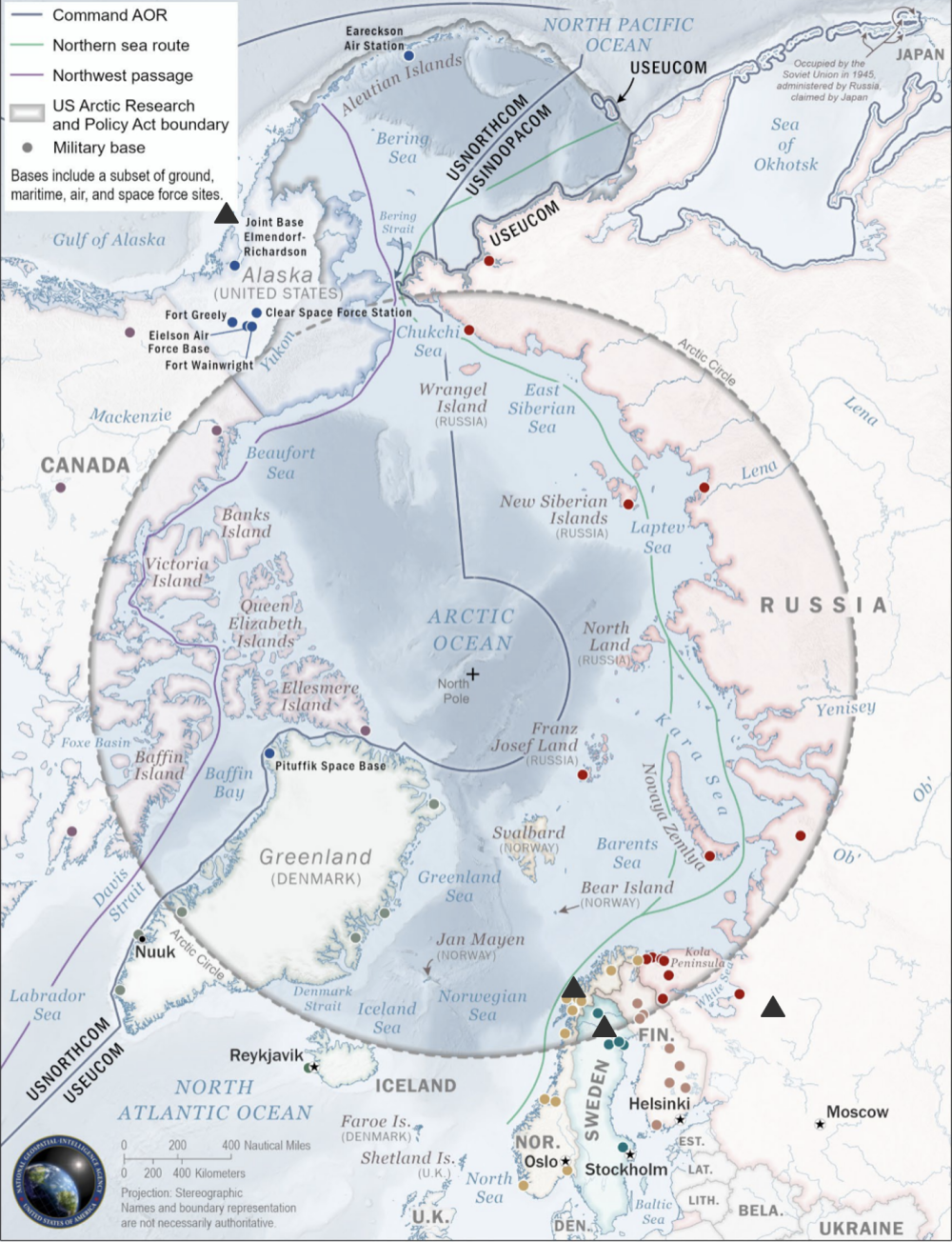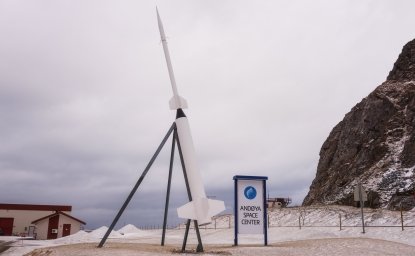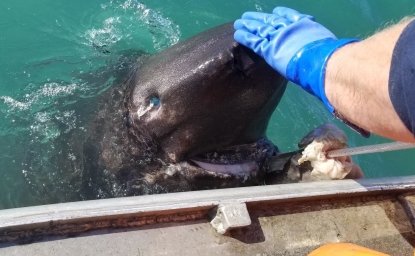
A blog of the Polar Institute
In 1892, a group of adventurers settled on a new idea for Arctic exploration. Rather than using a regular sailing vessel, optimized for speed on the open ocean but weak to the crushing forces of sea ice, they built a ship designed to freeze. As ice closed in, this ship’s rounded hull would allow it to “float” above, riding the icepack through the winter and, hopefully, making it through the Northwest Passage. They named this ship Fram, Norwegian for “forward.” Fram would participate in three polar expeditions: one, led by Fridtjof Nansen in an attempt to reach the North Pole; a second, led by Otto Sverdrup, which charted a massive section of the Northwest Passages and charted the islands now known as the Sverdrup Islands in the Canadian Arctic Archipelago; and a third, led by Roald Amundsen, on the first expedition to reach the South Pole. Amundsen later led the first successful ship-borne journey through the Northwest Passage on a different ship, the Gjøa, in 1906.
Today, in 2024, a different group of adventurers will pioneer another new idea for Arctic exploration. They will not travel by ship, skis, sled, or plane - instead, they’ll travel by spacecraft. They’ll become the first people to orbit the Earth in a polar orbit, “floating” over the North and South poles approximately every ninety minutes as they conduct science experiments and observations. Launching from Cape Canaveral on a SpaceX Falcon 9 rocket, they’ll fly onboard a SpaceX Crew Dragon spacecraft. But they call their mission Fram2.
The Fram2 expedition is only the most recent example of the relationship between space exploration and the Arctic region. Since the days of Sputnik, launched in 1957 during the International Polar Year of international cooperation, these two domains have been tied together by geography and necessity. During the Cold War, the Arctic was heavily militarized, with radar stations and satellite ground antennas strategically placed to cover the shortest distance between the two superpowers, ready to track ballistic missiles.
Now, as competition between NATO, the Russian Federation, and the People’s Republic of China heats up, the Arctic is well-understood as a military domain influenced by space - the latest DoD Arctic Strategy, released in July 2024, mentions space capabilities nineteen times; an increase from thirteen mentions in the 2019 edition. The US and China currently operate independent military branches dedicated to space (the US Space Force - which has a base in Greenland - and the People’s Liberation Army Aerospace Force, while the Russian military is quick to demonstrate and deploy offensive space capabilities.
However, the ties between space and the Arctic expand beyond military maneuvering. There is a larger political, economic, and social relationship that not only impacts the millions of people who call the Arctic home, but everyone on Earth who stands to be affected by climate change. It can even teach us important lessons about life on other planets. In August, I was able to spend two weeks in the Arctic studying this relationship on an expedition sponsored by The Explorers Club and Adventure Canada, and this post includes some observations from that research.
First, we need to talk about physics and geography. Activities in space are intrinsically tied to the geography of the Earth. The most efficient way to launch a rocket is directly to the East and right at the equator, taking maximum advantage of the Earth’s rotation. This is why the main American launch sites are in Florida and southern California; European rockets launch from French Guiana; and the heaviest Chinese rockets take off from Hainan Island in the South China Sea. Sometimes, however, rockets launch in less efficient directions to place payloads in specific orbits. Polar orbits, in which a spacecraft passes over the North and South poles, are used for Earth observation, reconnaissance, weather monitoring, and some telecommunications satellites. Certain near-polar orbits, known as sun-synchronous, are timed to allow a spacecraft to pass over the same spot on the Earth at the same time each day - so that shadows remain the same in every image. Other orbits, such as Molniya and Tundra orbits, are highly elliptical and allow for longer “dwell time” over high latitude areas.
No matter the orbit, spacecraft need to be in communication with the ground as they travel around the planet - about once every ninety minutes, in a polar orbit - and require ground stations with powerful antennas. This results in stations scattered across the globe, from the Australian outback to South Pacific Islands, and, of course, the Arctic. In order to expand their satellite control ability beyond their borders, the PRC operates a fleet of satellite command ships and built a ground station in Argentina. In another example of political geography determining space activities, the orbit of the International Space Station (ISS), which is in Low Earth Orbit at an inclination of about 51.6 degrees, was selected by a joint committee of NASA and Roscosmos. It was chosen over lower (more efficient) orbits because it is the lowest inclination reachable from Baikonur Cosmodrome (the southernmost launch site operated by Russia) without overflying mainland China.
Due to these geographic facts, space and the Arctic are intrinsically connected. The United States, Norway, and Russia each operate launch sites in or near the Arctic Circle, specifically for placing satellites into polar orbits.

Not only are Arctic ground stations, like those in Svalbard, Norway and Gilmore Creek, Alaska, required to maintain continuous contact with these polar-orbiting satellites, but space-based capabilities often represent the most efficient way to monitor the Arctic due to remote communities and extreme environments.
Some of the earliest comprehensive analysis of Arctic and Antarctic ice sheets was conducted via satellite, such as NASA’s GRACE (Gravity Recovery and Climate Experiment) and ICESat (Ice, Cloud, and land Elevation Satellite) programs in the 2000s, which provide key data sets for understanding the progression of climate change. Just this year, two major Arctic-related weather missions launched, both products of international cooperation. First, the Environmental Defense Fund (EDF), an American NGO, partnered with the New Zealand Space Agency to build and launch MethaneSAT, a satellite designed to monitor global methane emissions. Placed into a sun-synchronous orbit by a SpaceX Falcon 9 rocket (with New Zealand launch competitor Rocket Lab contributing a mission operations center), MethaneSAT will track Arctic oil and gas facilities. In August, the European Space Agency’s (ESA) Arctic Weather Satellite mission launched (again on a Falcon 9). This satellite, with industrial contributions from twelve ESA member-states, carries a microwave radiometer to measure humidity and temperature. NASA’s Landsat program, culminating in Landsat9 launched in 2021, has been gathering images of the Earth for more than fifty years. A stable of commercial imagery services, like Maxar, Planet, Spire (all publicly traded) and other smaller startups image every inch of the planet and offer their data to paying customers. These services continue to expand - there were over 1,000 Earth observation satellites orbiting in 2023.
While these types of satellite missions gather terabytes of data every day, that data is only relevant to Arctic communities if it can be accessed when needed and linked to real situations on the ground. Projects likeSMARTIce, which pairs local knowledge with satellite data and employs indigenous observers, and IcySea, a commercial mapping application that provides timely, low-bandwidth imagery, weather, and navigation data to Arctic operators, help promote this accessibility. But without reliable access to the internet, these data and services are operationally useless. Satellite communication networks like Iridium, Telesat, and SpaceX’s Starlink provide internet access to the most remote communities, those unreachable by fiber optic or submarine cables. These networks, and the chase to build and expand them, result in some huge economic figures. SpaceX’s Starlink generates more than six billion USD in revenue per year. The Canadian government has invested nearly two billion USD in Telesat’s domestic alternative to Starlink, called Lightspeed; and an indigenous-owned private equity group, Sixty North Unity, is buying Northwestel, the leading northern Canadian communications utility, from Bell Canada. Northwestel has signed deals with both Telesat and OneWeb for satellite services. Beyond commercial services, the US military has pushed for enhanced communication capabilities in high latitudes. The Arctic Satellite Broadband Mission, a partnership between the US Space Force and Space Norway, consists of two interoperable satellites carrying a variety of commercial and government payloads to support communications about sixty-five degrees. Launched in August 2024 onboard a (you guessed it!) SpaceX Falcon 9, this mission is the first time an operational Department of Defense payload is carried on an international spacecraft. As climate change continues, more commercial activity takes place in the region, and geopolitical tensions increase, the resilience of communication services, navigation capabilities like GPS, and other tracking capabilities such as AIS and ADS-B will be critical to ensuring safe operations and peaceful cooperation.
When we talk about space, it’s not just satellites. Space exploration also involves people. Whether the civilian crew of Fram2 or the International Space Station astronauts from NASA and other space agencies, human exploration has always been a driver of our reach into the cosmos. As NASA prepares to send humans back to the Moon and SpaceX prepares Starship for eventual Martian landings, the Arctic plays a role here, too. Devon Island, the largest uninhabited island in the world, hosts two “analog astronaut” facilities: one, the Haughton Mars Project (HMP) is operated by NASA; the other, the Flashline Mars Arctic Research Station (FMARS) is owned by a private, non-profit organization, the Mars Society. Both of these analogs are located within the Haughton crater, a thirty-million-year-old impact site, and host temporary crews of “astronauts”, who go through the motions of living and working on other planets. The environment on Devon Island - windswept, barren, and rocky - simulates the Martian surface, and the analog astronauts conduct their work as if they really were on Mars - including wearing spacesuits outside and imposing a delay on their communication with the outside world (light takes between three and twenty minutes to travel from the Earth to Mars, depending on their orbital alignment). These expeditions gather valuable information about crew psychology and group dynamics while testing equipment, procedures, and techniques for future space-bound missions.
When Fram2 launches, it will also carry amateur radio equipment, which will be used to conduct a STEM competition amongst universities and secondary education organizations around the globe. Just as the Northwest Passage captured the attention of adventurers for centuries, space is an opportunity to inspire the next generation of scientists, leaders, and explorers. The Arctic is a perfect place to see how those achievements in space matter for the people who live on Earth - no matter where they call home.
Author


Polar Institute
Since its inception in 2017, the Polar Institute has become a premier forum for discussion and policy analysis of Arctic and Antarctic issues, and is known in Washington, DC and elsewhere as the Arctic Public Square. The Institute holistically studies the central policy issues facing these regions—with an emphasis on Arctic governance, climate change, economic development, scientific research, security, and Indigenous communities—and communicates trusted analysis to policymakers and other stakeholders. Read more

Explore More in Polar Points
Browse Polar Points
Greenland’s New Governing Coalition Signals Consensus

Fulbright Arctic Initiative IV Scholar at the Polar Institute


